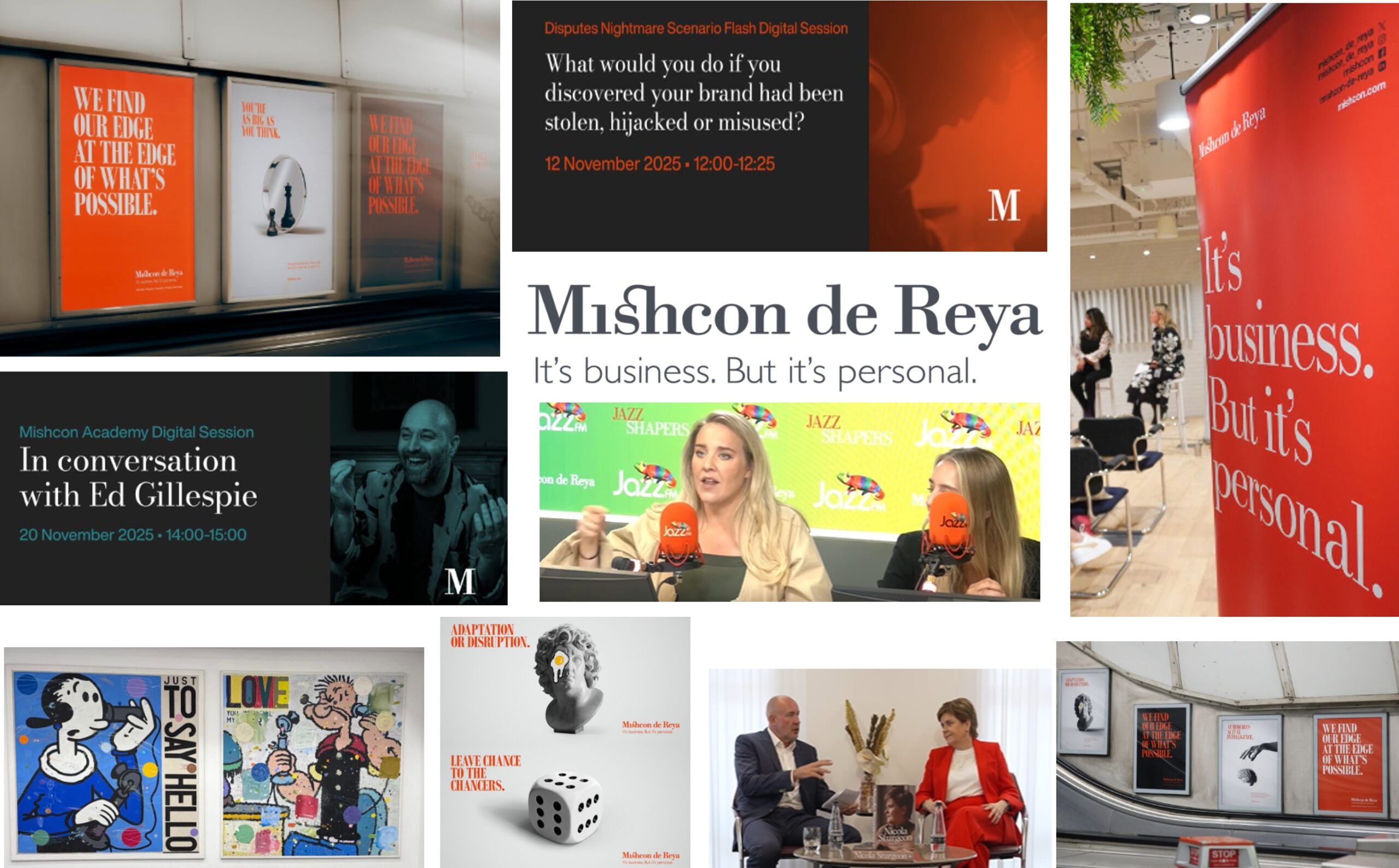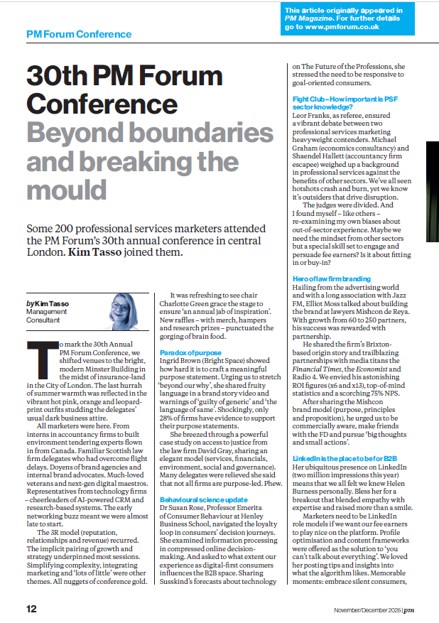
At the beginning of 2020 at a “Being more strategic” workshop by the Professional Marketing Forum the delegates – from a variety of legal, accountancy, property and consultancy firms – reflected on how to improve strategic thinking both in themselves and their firms. A further session is imminent and I will share some information about the impact of the Covid-19 pandemic on strategy after that. In the meantime, here are their reflections on how to improve your strategic thinking – seven insights:
1. Decide what good strategy looks like
How do you know when you have a good strategy? Often, it is not until it has been implemented and has generated the desired results can you say for sure that it was a good strategy.
There are criteria for assessing an effective strategy during its development. Another test is how well everyone in the organisation understands the strategy and can articulate it concisely when talking to colleagues, clients and others and the extent to which the strategy guides their day-to-day actions.
A book that might help here is “Good strategy, Bad strategy” by Richard Rumelt. Early on the Rumelt suggests that the kernel of a good strategy is: A diagnosis, a guiding policy and coherent action. A coherent strategy co-ordinates policies and actions and creates new strengths through subtle shifts in viewpoint.
He continues: “Most complex organisations spread rather than concentrate resources, acting to placate and pay off internal and external issues”.
He identifies the four indicators of bad strategy: fluff, failure to face the challenge, mistaking goals for strategy and bad strategic objectives.
The learning point was to think in advance about what “good looks like” when it comes to strategy development.
2. Adopt a strategic process
During the session we considered a number of different methods and processes to develop a strategy – and which are most suitable for driving strategy development for an entire business compared to a particular market or segment or territory,
As simple often wins, most delegates found the three stage model most useful:
• Where are we now? ((Analysis)
• Where do we want to be? (Goal-setting)
• How will we get there? (Strategic choices)
A couple of the delegates liked the bow-tie strategy approach described in the “Professional services leadership handbook” which comprises the following stages:
1. Analyse (decision grid, desk research, interviews, financial analysis)
2. Consult (employee surveys, strategy development groups, off-site meetings)
3. Decide (vision for the future – at least three years ahead, priorities, what we will and won’t do)
4. Distil strategy into fundamental principles (one page plan)
5. Cascade the strategy throughout the firm
6. Implement (achieve buy-in internally, change processes, organisational design)
7. Track and adapt (Financial KPIs, Clients KPIs, Employee KPIs, Annual reviews)
3. Make a choice
By definition, when you select a strategy option you reject others.
Most professional firms are complex organisations with multiple services being promoted into a variety of different markets. The matrix is potentially huge. So too are the range of options and tactics you can adopt. There is a risk that if you attempt to do too much you will spread your resources too thinly, confuse the market and fail to meet your objectives.
By conducting rigorous analysis during the analysis phase of the strategy process, you can identify all the options and opportunities. The leadership must then select the best fit options – matching the risk profile, objectives, external environment and internal resources.
4. Adopt a different perspective
Along with many other strategists, I advocate adopting a “helicopter” view when tackling strategy.
When preparing strategic analyses you collect a lot of research and information. You can get lost in the data and the detail – especially in large and complex organisations. So you take a trip in your helicopter to take an overview of what you see beneath you.
The main features on the external and internal horizon should then come firmly into view. I’m not suggesting you ignore the detail – but you need insight into what the main obstacles and opportunities might be before digging deeper.
5. Challenge assumptions
The other issue we considered here was mental models and assumptions. If you have a hammer, everything looks like a nail. Similarly, marketing people will always look to marketing frameworks and HR people will always look to human resources concepts.
If you have only ever worked within law firms, then you will draw on models and assumptions that dominate that sector. Yet if you have worked in retail, technology and property sectors you have more mental models to draw on – and perhaps insights into how these might translate into other sectors.
There is considerable evidence that diversity improves decision-making so you need people from different industries and functions and backgrounds to ensure you look at strategy from as many perspectives as possible.
6. Analyse and ask questions
You may not be in a position to propose or make strategy suggestions.
However, most people can help with conducting research and analysis as you examine the external and internal environment before you start setting goals and identifying possible strategies.
Armed with data, information and insight you can also ask incisive questions that lead others to think beyond their current assumptions to come to better decisions. Sometimes your questions drive a new area of research and analysis. Sometimes your questions can drive the strategic process in a different direction.
We talked a little about divergent and convergent thinking. Divergent thinking is where you move out from the point of focus and explore widely different perspectives and ideas. Convergent thinking summarises and brings back the focus to the task at hand.
7. Be bold and leapfrog the competition
If you base your strategy purely on what has happened in the past, you are making the assumption that things will continue the way that they have in the past. Clearly, this is a flawed assumption as so much is changing all the time.
Looking only to the past it is like driving a car with your eyes firmly focused on the rear view mirror rather than the road ahead.
Market disruptors and innovators are successful because they are not constrained by what has happened in the past. They are not embedded in the dominant thinking or hamstrung by legacy belief systems.
The authors of “Blue Ocean Strategy – How to Create Uncontested Market Space and Make Competition Irrelevant” offers several examples where businesses didn’t simply follow the herd but stepped out into new markets.









